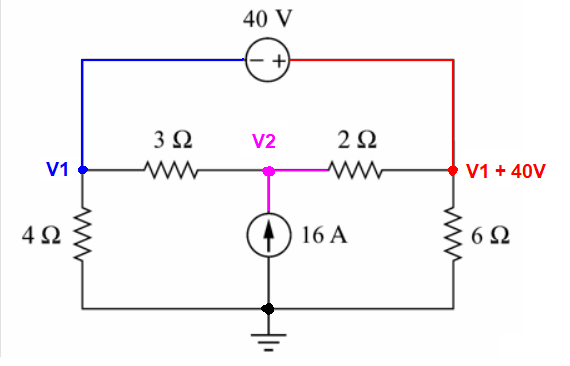I'd just rearrange the diagram and use source-splitting techniques: -

From left to right, it's the same circuit but, breaking it down step by step is easier to analyse. Each step saves maths and is a pictorial record of what you did thus, making it easier to parse.
$$\boxed{\text{So, why do I prefer this method?}}$$
Well, my turn to solution is simulation (because I don't do exams any more) but, source-splitting is my 2nd choice because it's clearer at each stage and, teaches you how to properly analyse circuits using your brain. It makes you more EE savvy.
So, from the diagram on the above right, I'm going to calculate the voltage between node 1 and node 2. Note that the earth/ground point originally in the question's circuit is irrelevant here.
The 40 volt source in series with the 2 ohm resistor is equivalent to a current source of 20 amps in parallel with 2 ohms. That current source and 2 ohm resistor are now in parallel with a 3 ohm resistor and a 16 amp current source: -

Hence, the voltage between node 1 and node 2 is
$$(20\text{ amps}+16\text{ amps})\cdot\dfrac{3\text{ ohms}\times 2\text{ ohms}}{3\text{ ohms}+2\text{ ohms}} = 43.2 \text{ volts}$$
And, if you looked at the answer given (V1= 22.4 V V2= 65.6V) that is what you see.
Then just add what you know (from one calculation) to your original circuit: -

And I'm going to stop here in the expectation that the OP will solve the rest.







